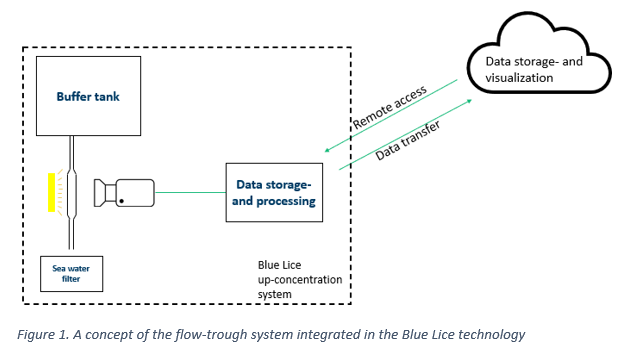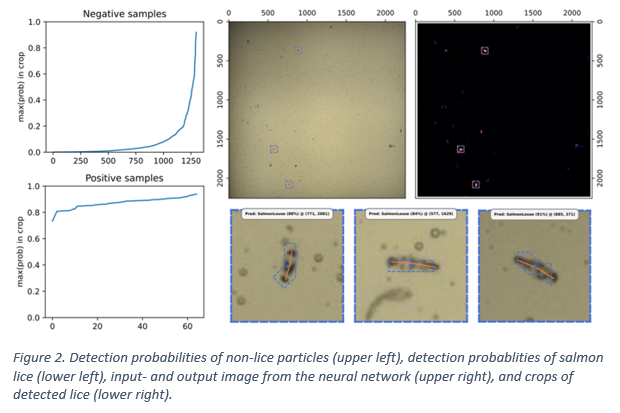REAL-TIME MONITORING OF OCCURRANCE OF PLANKTONIC SEA LICE Lepeophtheirus salmonis STAGES IN LICE TRAPS USING MACHINE LEARNING
Introduction
Sea l ice has for many years been a headache and a major cost driver for the Atlantic salmon ( Salmo salar L.) farming industry, and many different technologies for removing the sea lice on infected salmon have been developed in the last decades. Blue Lice is a start-up company which has developed a system for capturing the free-swimming sea lice life stages before they are able to attach to their host by using specific illumination signals to attract and capture them via pumps and filters. The system is currently deployed at several sea farms , but alt hough the farmers claim the technology has a positive effect on the sea lice levels, , the actual effect has still not been quantified and documented due to the many challenges related to conducting research in full-scale field trials. In order to assess how effective Blue Lice’s technology is in capturing free-swimming sea lice at salmon sea farms, we developed a system for counting the number of captured sea lice in real-time using camera systems and machine learning.
Materials and method
We present a high-speed flow-through imaging system (measuring 400mm x 200mm x 130mm) capable of acquiring sharp, high-resolution (22 MP) images of small particles (0.2 mm x 0.2 mm) passing through a flow cell with sea water passing through at velocities up to 0.5 m/s , t he system is capable of imaging and processing 14L of water per minute. Built into this system is a state-of-the-art edge computer (Nivida Jetson AGX Orin) for real-time processing of the imaging data and a 4G modem for automatically transmitting the results to the cloud for real-time visualization of the estimated amount of s ea l ice captured by the Blue Lice technology.
The technology includes a water filtering system that automatically cleans the filters by reversing the flow direction through the filter, re-directing it to a buffer tank where sea lice and other particles with the seawater can pour through to an interchangeable filter bag , essentially up concentrating the seawater . The system is capable of pumping 900 L/m, meaning when implementing the flow-through imaging system between the buffer tank and the interchangeable filter (see Fig. 1) , we are also capable of imaging and processing 900 L/m.
Results
So far, a prototype has been thoroughly tested in a lab environment at SINTEF SeaLab in over 200 simulated filter cleaning operations . In this process, we have gathered over 150.000 images of seawater containing salmon louse copepodids and nauplii, copepods (Acartia tonsa) and preserved samples collected from the Blue Lice technology deployed at a fish farm. The data has been used to train a neural net (FCN; Fully Convolutional Network) to automatically detect sea lice (Fig. 2).
Conclusions
So far, the system has been proven accurate for detecting and counting sea lice in a simulated lab setup. However, when it is implemented in a real-world scenario , we expect the image data to be very different, with higher biodiversity and changes between seasons . Using the 4G modem, we can upload image data while the system is in the field so that we are able to improve the detection algorithm and training data on the go, increasing the systems capability and accuracy over time. This system can also, with time, detect other species , giving it a use-case beyond only counting sea lice.

